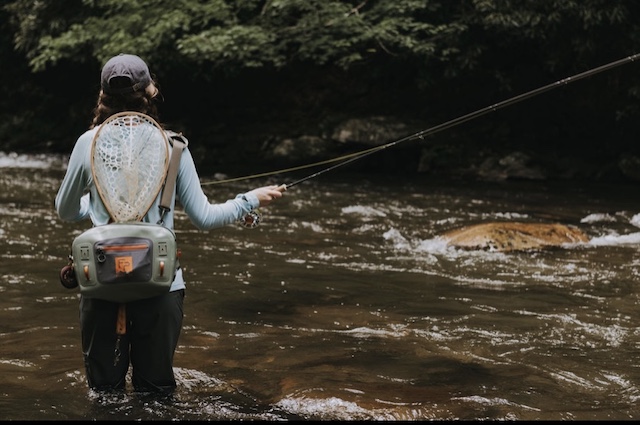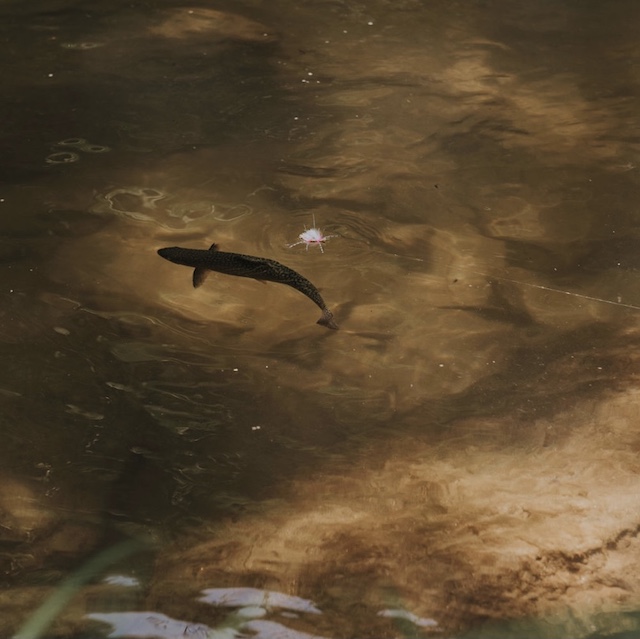
Story co-produced with Scott Mitchell
Ally Jones is a senior nursing student at Western Carolina University who also happens to be an artist. However, to most, her creations might not be the first thing to mind when you think of art. Jones creates fly fishing ties, a type of art many people don’t even know about.
Fly tying is when you create an artificial fly that represents a natural food source for fish. They are then attached to hooks on fishing rods to catch fish. They are created using wires, feathers, animal fur, thread and more to give a natural appearance.
Jones began fly fishing in 2014 and started learning how to tie flies shortly after. She learned the craft from Steve Hudson at her job Alpharetta Outfitters in Alpharetta, GA.
“They do a class called Tie and Try where you can learn how to tie flies in the morning and then go fishing with your new ties in the afternoon,” Jones said. “I got really into it after that.”
Over the years, Jones has learned how to tie dozens of different types of flies which are used for different types of fish. The better the fly, the better fish you might be able to catch
“A nymph is a single hook, and it imitates small bugs in the stream and then streamers are typically used to represent larger bugs and smaller fish. They usually have two parts to them, two hooks so they look more realistic in the water because they have articulation,” Jones said.

The time it takes to make a fly depends on the size and type of fly that is being crafted. Jones makes these flies during her free time or also when she’s watching a lecture or studying for a test to give her something extra to do.
“Some of them can take me less than five minutes for the small nymphs to 30 or 45 minutes for the big streamers. It just depends how complex and big they are and the different components,” Jones said.
Many people who create fly ties tend to sell them. Jones prefers not to work on commission for her fly ties. She feels it would be difficult to make a profit.
“I have sold them before but depending on the fly, it sometimes can take a while and you’d have to sell them for a lot to make money off of it,” Jones said. “I typically don’t because it takes the fun out of it for me.”
Over the years, Jones has become more skilled at creating different types of flies. She uses her own flies almost every time she goes fishing and she is very successful.

“I really love the process of tying flies and then getting to take them out to use fishing,” Jones said. “It’s cool that these things I made, help me catch fish. It’s two things I love.”
Jones passion for making flies comes from her love of fly fishing. Jones even teaches lessons to those who want to learn to fly fish and tie flies. If you want to learn how to tie a fly, watch Ally’s tutorial.



